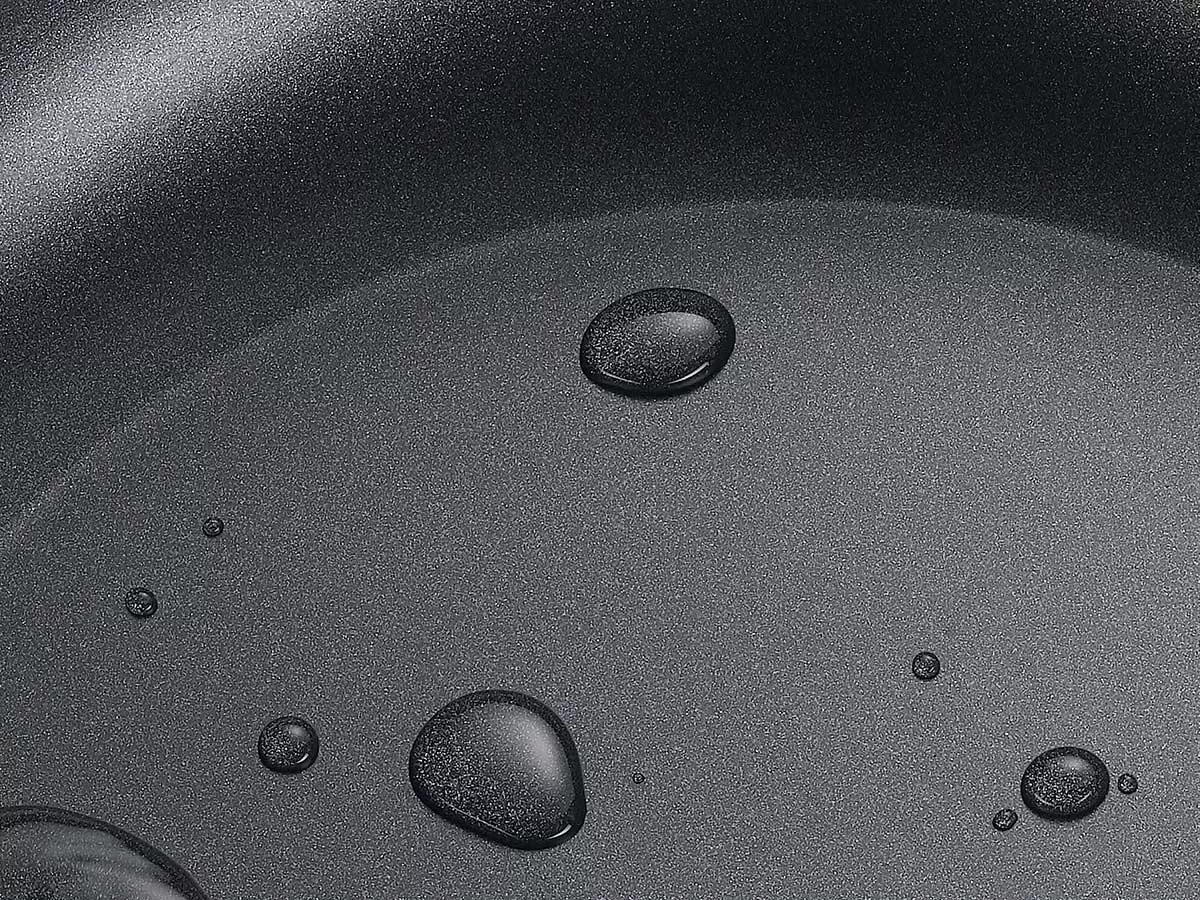Fluoroplastics are a group of high-performance plastics that are known for their exceptional resistance to chemicals, heat, and electrical insulation properties. They are widely used in various industrial applications where extreme conditions are encountered.
The history of fluoroplastics began in 1934 when F. Schloffer and O. Scherer of the German company I.G. Farbenindustrie invented polychlorotrifluoroethylene (PCTFE). This was followed by the invention of polytetrafluoroethylene (PTFE) in 1938 by Dr. Plunkett of DuPont, marking the beginning of research and applications of fluoropolymers.
Subsequently, as market demand grew and scientific technology advanced, various fluoroplastics were invented. In 1955, the copolymer of vinylidene fluoride and chlorotrifluoroethylene (VDF-CTFE) was invented. Around 1960, polyvinyl fluoride (PVF), polyvinylidene fluoride (PVDF), and the copolymer of ethylene and chlorotrifluoroethylene (ECTFE) were successively developed. In the 1970s, perfluorosulfonic acid resin (XR resin), tetrafluoroethylene-hexafluoropropylene copolymer (FEP), ethylene-tetrafluoroethylene copolymer (ETFE), and tetrafluoroethylene-perfluoroalkyl vinyl ether copolymer (PFA) were created.
Fluoroplastics contain fluorine atoms, which confer several excellent properties such as outstanding flame retardancy, stability, superior electrical insulation, mechanical performance, high heat resistance, remarkable resistance to oils, solvents, and wear, as well as good moisture resistance and low-temperature tolerance.
Thanks to their exceptional chemical, physical, and thermal properties, fluoroplastics are extensively used in a wide range of industries, including defense and military, aerospace, semiconductors, electronics and electrical engineering, construction, medical, automotive, electromechanical, metallurgy, and petrochemicals. These materials are indispensable in modern technology.
Let's explore some of the common types of fluoroplastics: PTFE, ETFE, PVDF, FEP, and PFA.
PTFE
Polytetrafluoroethylene (PTFE) is a high molecular weight polymer synthesized from tetrafluoroethylene as a monomer. Known as an exceptionally strong material, PTFE has been instrumental in various applications due to its remarkable properties.
PTFE demonstrates excellent mechanical toughness even at extremely low temperatures, maintaining a 5% elongation rate at -196°C in liquid nitrogen and can withstand temperatures as low as -268.785°C in liquid helium. Its resistance to corrosion is notable, as it remains inert to most chemicals and solvents. Remarkably, PTFE does not swell or gain weight even after soaking in water for a year; it also boasts the lowest coefficient of friction among solid materials and the lowest surface tension, preventing any substance from adhering to it. Its electrical insulation capabilities are outstanding, capable of resisting up to 1500 volts of high voltage, making it an excellent insulating material in electrical applications. Additionally, PTFE is non-toxic and biocompatible, allowing it to be used safely for artificial blood vessels and organs implanted in the body over long periods without adverse reactions.
Due to these properties, PTFE is widely used in various applications, including wiring, coaxial cables, especially in high-frequency radio fields. Its high melting point makes it a high-performance substitute for polyethylene. Moreover, its low friction coefficient is ideal for manufacturing sliding bearings, gears, skateboards, seals, washers, liners, and even lubricants, effectively reducing mechanical friction and improving energy efficiency.
During World War II, PTFE was designated as a military necessity. As the chemical industry evolved, it became the fluororesin with the largest production volume and fastest growth in consumption.
PTFE is commonly used in the consumer industry and is also visible in our everyday lives. For example, non-stick pans are coated with PTFE, and the material is used in technical garments like hardshell jackets. Unlike previous coatings like PU or PVC, which could not transmit sweat outside of the garment, making it feel stuffy, PTFE membrane allows the fabric to breathe. This "breathable fabric" lets water vapor pass through while blocking water droplets and wind, providing waterproof, moisture-permeable, and windproof properties, enhancing comfort and warmth.
Beyond clothing, PTFE is also made into military apparel, firefighting gear, chemical protective suits, shoes, hats, rain gear, and masks. PTFE microporous membranes are used for flue gas filtration in various industrial furnaces such as chemical plants, steel mills, power generation, and waste incineration.
Furthermore, PTFE is applied in the 5G sector, used in high-frequency copper-clad laminates, RF cables, base station antenna filters, and as an insulating medium in various connectors.
However, despite its excellent qualities and wide applications, no material is perfect or suitable for all scenarios. PTFE, a fluoromaterial with a very high melting point, cannot be melt-processed. It does not adhere well to metal equipment, and its insufficient mechanical strength limits its use in corrosion protection.
ETFE, inheriting PTFE's excellent chemical and corrosion resistance while possessing good adhesion to metals and a similar coefficient of expansion to carbon steel, can be melt-processed and has become an ideal material for composite with metals.
ETFE
Ethylene Tetrafluoroethylene (ETFE) was not a serendipitous discovery like PTFE but was developed with a specific purpose in mind. In 1970, to protect spacecraft and astronauts from cosmic radiation, NASA and DuPont modified the chemical structure of PTFE to create ETFE.
As a derivative of PTFE, ETFE retains excellent heat resistance, chemical stability, and electrical insulation properties of PTFE while significantly improving radiation resistance and mechanical properties. ETFE's tensile strength is twice that of PTFE, reaching nearly 50 MPa, making it the toughest fluoroplastic. Its lightweight nature (only 1% the weight of glass) and superior transparency, allowing more light to pass through, have earned it the nickname "soft glass." Originally developed for space-age applications, ETFE is also an excellent insulating material and more elastic than glass.
Here are three main characteristics of ETFE summarized:
- Ideal Composite Material with Metals: ETFE possesses the corrosion resistance of PTFE and strong adhesion properties to metals, overcoming PTFE’s inability to bond with metals. Its coefficient of thermal expansion is close to that of carbon steel, making ETFE an ideal composite material for metals, particularly noted for its excellent negative pressure resistance.
- Favored Polymer in Architecture: ETFE film meets B1 and DIN4102 fire resistance standards, does not drip when burned, and has a light weight and high light transmission rate of up to 95%. Its toughness, high tensile strength, and self-cleaning properties, combined with its environmental friendliness and long lifespan, make it popular for architectural applications. ETFE has been used in structures like the Eden Project in the UK, the Water Cube in Beijing, and the Allianz Arena in Munich.
- Ease of Processing: The workability of ETFE allows it to be manufactured into sheet linings for pipe interiors or made into sealing materials. It can also be processed into powder coatings to create anti-corrosion coatings on the inner walls of equipment and pipes. These coatings are advantageous because they are hard, thin, seal well, and have a long corrosion life of about three years.
Despite its superior physical and chemical properties, ETFE still has some limitations. For instance, its melting point and operational temperature are significantly lower than those of PTFE. As the demand for ETFE continues to grow in the market, these properties shape its applications and potential for future development.
FEP
Fluorinated Ethylene Propylene, commonly known as FEP, is a copolymer of tetrafluoroethylene and hexafluoropropylene, with the latter comprising about 15% of the compound. This material is a modified version of polytetrafluoroethylene (PTFE).
Unlike PTFE, which is a linear, symmetrical high polymer, FEP is a branched polymer. This structural difference means that FEP has lower crystallinity than PTFE, resulting in better processability and a lower melting point.
FEP is a soft plastic, and compared to many engineering plastics, it has lower tensile strength, wear resistance, and creep resistance. It is chemically inert and maintains a low dielectric constant (2.1) across a wide temperature range. FEP is non-flammable and can help prevent the spread of flames. It can be used continuously at temperatures ranging from -85°C to +200°C, and can even withstand temporary extremes from -200°C to +260°C without degradation. Overall, FEP shares many of the superior properties of PTFE while also being thermoplastically moldable, making it an excellent example of combining strength with flexibility.
The chemical and physical properties of FEP determine its applications. It is primarily used in the manufacture of tubing and the linings of chemical equipment, surface layers of rollers, and various types of wire and cable, such as aircraft arrester hook cables, booster cables, alarm cables, flat cables, and oil well logging cables. It is also used in thin coatings for solar collectors, leveraging its resistance to environmental factors and chemical stability.
PFA
Perfluoroalkoxy (PFA) is a modified material derived from polytetrafluoroethylene (PTFE), combining the exceptional physical and chemical properties of PTFE with improved cold flow properties and significantly reduced melt viscosity. This enhancement allows PFA to be processed using conventional molding techniques such as compression molding, extrusion, and injection molding.
PFA has a melting point of 300-310°C and a molding temperature range of 350-410°C. Its processing characteristics are similar to those of Fluorinated Ethylene Propylene (FEP), another fluoropolymer. However, due to its higher melt viscosity compared to FEP resin, PFA requires higher processing temperatures and slower processing rates, which can lead to more severe corrosion of the thermal processing equipment.
In the industrial sector, PFA is commonly used as a coating for corrosion protection, anti-aging layers, specialty filtration fibers, reactor linings, pipe linings, protective layers for optical cables, and components for aerospace equipment. Its applications span various fields, including construction, chemical, mechanical, electrical, aerospace, and medical industries.
Despite retaining most of the advantages of PTFE and being melt-processable, one downside of PFA is its cost, which is significantly higher than many other materials, impacting its affordability and widespread adoption.
PVDF
Polyvinylidene Fluoride (PVDF) was successfully developed by DuPont in 1944 and commercialized for the first time by Pennwalt Corporation in 1960 in the United States.
PVDF is a homopolymer of vinylidene fluoride or a copolymer of vinylidene fluoride with other fluorinated vinyl monomers. While PVDF shares many of the superior properties of polytetrafluoroethylene (PTFE), it particularly excels in rigidity, hardness, and creep resistance. Its processing and molding characteristics are significantly better than those of PTFE.
Beyond the capabilities of PTFE, PVDF offers improved corrosion resistance and mechanical properties, with a tensile strength reaching 50 MPa, almost double that of PTFE. Its melting point is lower than PTFE's, around 170 degrees Celsius, which enhances its processability. PVDF can be easily molded using conventional thermoplastic processing methods such as injection molding, compression molding, extrusion, and blow molding. It is the only fluoroplastic that can be made into rigid tubes.
PVDF also boasts high impact strength and wear resistance, and can be used over a temperature range from -62°C to +150°C, exhibiting high thermal resistance and excellent resistance to weathering and aging.
The molecular structure of PVDF, characterized by a high polarity due to the large dipole moment of the C-F bonds, confers outstanding dielectric properties. Thanks to these excellent qualities, since the 1970s, PVDF has been extensively used in applications such as architectural coatings, chemical plant components, and pulp processing in papermaking.
In the 1980s, the National Electrical Code in the United States advocated using PVDF as insulation for alarm circuits in buildings and ceilings. During the same decade, manufacturers of high-purity semiconductors began using PVDF in plastic piping for computer equipment production. By the late 1990s, PVDF was being used as a binder material for electrodes in new types of liquid lithium-ion batteries. Today, with the rapid development of secondary lithium batteries and other new energy sources, the use of PVDF in lithium batteries has dramatically increased.
Overall, PVDF is widely used in computers, aerospace, information processing, audio equipment, medical devices, robotics, physical testing, optical instruments, and the arms industry, showcasing its versatility across a broad range of advanced technological applications.





